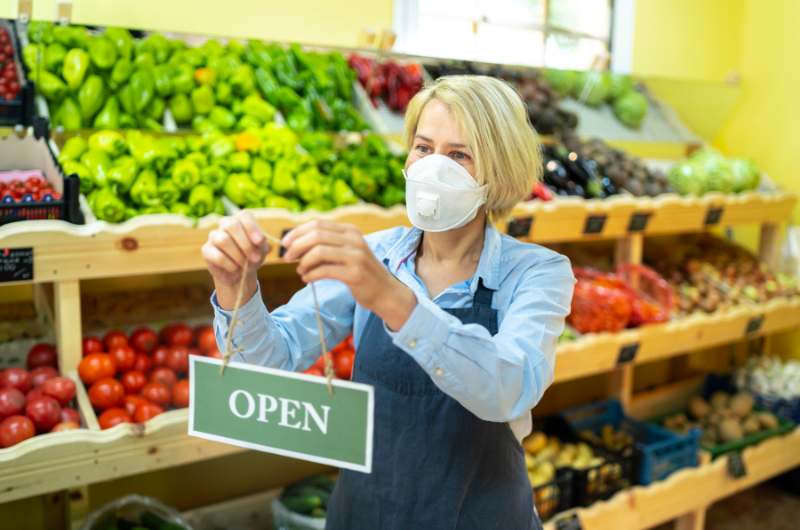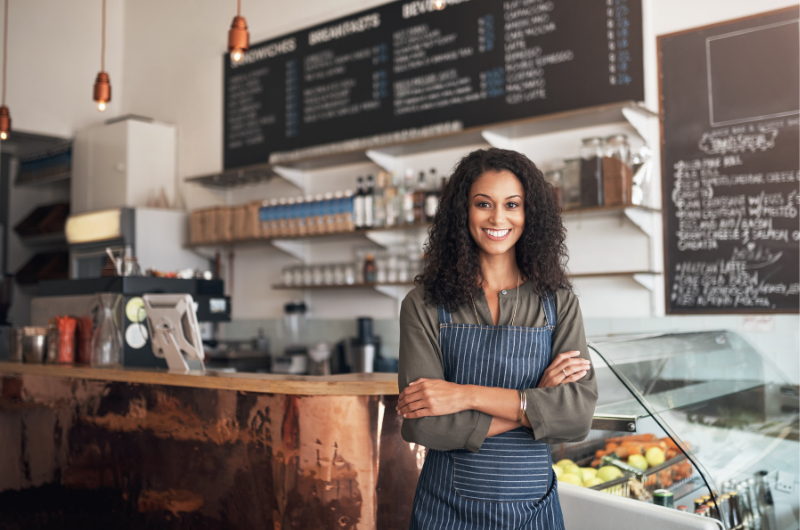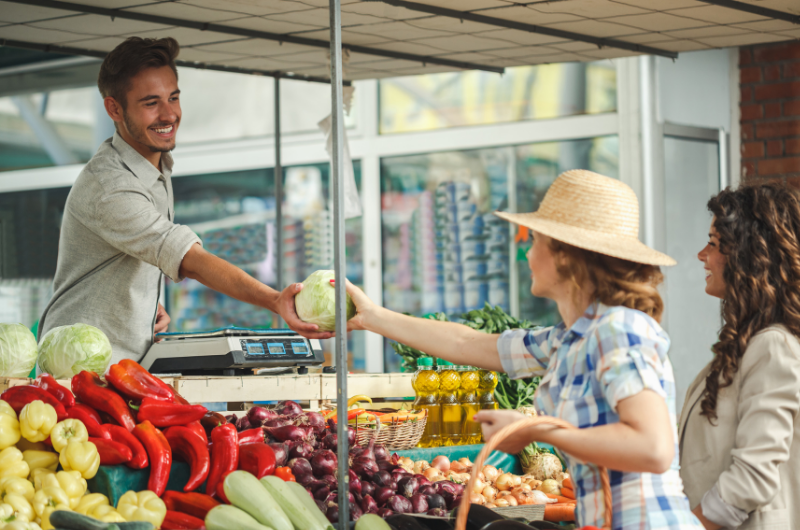As consumers, we have a lot of power, more than most of us realize. We have the power to influence industries and impact supply and demand for any product. In recent years there’s been more discourse about how we should use that power and what it means to vote with your dollar. There’s a renewed interest in the value of buying local products, whether it be for food, services, or household items. Because of this, many of us have a general understanding that why buying local and from small businesses is good, but perhaps don’t know the full extent of the positive impact on our local economies.
Despite what big box stores would have you believe, it’s far more beneficial to invest our money back into our own community. For example, the money we spend locally generates three and a half times more wealth for local economies than national chain businesses.
In this blog, we’re addressing the important questions, such as: Why should we, as contributors to our own local economies, actively commit to supporting our locally owned businesses? And why is it so critical now, in the wake of the Covid-19 pandemic, to invest in our communities?

The World Changed, We Adapted
The pandemic put most businesses, especially local mom-and-pop shops, through the wringer. In some cases, businesses couldn’t survive and had to close up shop for good. Every town likely has at least one or two restaurants, shops, bars, etc. that didn’t make it out the other end of Covid. While some businesses closed, there were also bright spots of community efforts to support businesses, and it helped immensely.
We collectively realized the value these businesses have, not just for our local economy but also for our own personal fulfillment. We crave the unique flavor that small businesses bring to our lives, and we fought to keep their presence in our neighborhoods.
As we move forward in our “new normal”, we wonder how we can make positive changes to ensure that our community’s businesses would survive another Covid. Could more businesses have been saved if we had better strategies and tools to support them? As we reflect on the last year and a half and look to the future, how can we build strong, sustainable local economies today? The answer starts with a local first mindset.

The Domino Effect of Buying Local
There’s a lot of evidence to suggest that buying local impacts more than just mom-and-pop businesses. If more people collectively invest in their own communities, everyone will feel the economic benefits. Here are some common ways that can happen:
Economic impact. Buying local ensures that finances continue to circulate in your community and helps the local economy thrive. When you shop at national chain stores or restaurants, your money is being invested in a company whose headquarters is likely thousands of miles away.
Fun fact: Local businesses generate 70% more local activity per square foot than big box stores.
Job creation. Who is hiring? You might be surprised to learn that small local businesses create two out of every three new jobs. The majority of Americans actually work for smaller businesses that have fewer than 100 employees. Local ownership creates more opportunities for residents to accept local jobs, keeping them in the community and keeping employment levels stable.
Your community stays one of a kind. A thriving local economy prevents your community charm from being eclipsed by large companies, like Walmart, who drive local businesses away and eliminate consumer choices, making the community dependent on their products. When independent businesses thrive, your community maintains that original, homegrown vibe, and is able to offer things unique to the area. That originality in turn attracts more visitors and encourages hometown pride.
Local goods. What’s not to love about the one-of-a-kind products crafted by our fellow community members? Not only are they made with care and have a spark of individuality, but these businesses tend to source their goods locally as well. For example, farm-to-table restaurants prioritize using local produce that grows in season. In addition to eating food that you know was produced by local farms, local food has its own unique flavor and distinctive character that you can’t get anywhere else.
Reduce environmental impact. Chain restaurants and stores require a lot of resources to transport their fresh food and goods to you. That excessive transportation has the consequence of high CO2 emissions. In contrast, products that are locally made don’t often require the same high level of travel and produce less waste. As we look to a future that will be intertwined with the challenges of air quality and climate change, investing in local businesses is an easy step any community can take to reduce its collective carbon footprint.
Entrepreneurship promotes autonomy. Shopping local breeds innovation, creativity, and economic independence among local business owners.
Take the town of Batavia, IL for example. They invested in entrepreneurship by setting up a “business incubator” opportunity at the Batavia Boardwalk. This boardwalk-style collection of charming tiny shops allows budding entrepreneurs to test out the success of their business with the local community, while also doubling as a major draw for out-of-town visitors.

Taking the Next Steps
Every community has the creative potential for this kind of innovation, so encourage that creativity by choosing small businesses. Is a sandwich from a locally owned restaurant like Riverside’s Sawmilly a bit pricier than eating at a strip mall Subway? Perhaps, but the economic impact on the local economy and the related benefits are well worth that extra couple of dollars.
Ultimately, we know that one individual is not going to single-handedly save the local economy, promote entrepreneurship, and boost local tourism by going to the local coffee shop instead of Starbucks. We’re not advocating for your average “buy local” campaign that places all the pressure on consumers. Economic growth requires a collective shift in attitude, a long-term commitment to local development, and a concerted effort to make buying local an accessible alternative, which is easier said than done. But it can be done.
Support local farmers by attending the farmers market and shop at small grocery stores. Spend a Saturday evening at the local bar that’s been a hometown staple for decades, because even historically successful businesses are not untouchable, they need continued support as well.
Considering the gradual cultural shift towards local tourism that has already begun, we have the inspiration needed to create thriving local economies, we just need to access the tools and strategies. Don’t stop at encouraging local shopping. Book a call with us to learn more about how your destination can contribute to boosting local tourism, too.



Comments are closed.